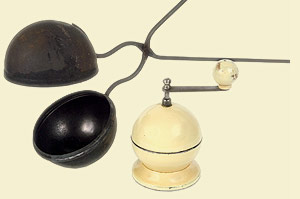Settling in
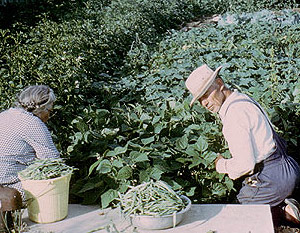
click to enlarge »
Stefan and Jozefa Grzejszczak in the back yard of their Bathurst Road home harvesting their crop of beans. The garden was planted with all manner of vegetables and what little space was left was given over to fowls.
Photo courtesy Lucy Grzejszczak
The thing which finally made migrants feel they had become Australians was naturalisation. In the 1950s those wishing to become Australian citizens had to have lived in Australia for five years, be of good character and speak reasonable English. By the time the first post-war migrants started thinking about becoming Australian citizens in the mid-1950s, the Immigration Department asked local authorities to hold citizenship ceremonies. Previously, local courts had performed a perfunctory ceremony but it was felt that the atmosphere in a busy court – indeed the very fact that it was being held in a court – was not in the spirit of the occasion. Some newcomers were fearful of courts, seeing them solely as places for dealing with criminals, and would avoid them at all costs.
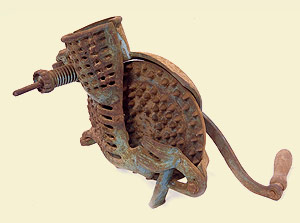
Corn husker brought from Italy by
Joe Cunial in 1949. Joe remembers: "I had two brothers here already and we used to husk the corn and
feed it to the chooks...
more info »
more info »
Once their homes – temporary or otherwise – were built, migrants were
quick to put their gardens to work. Many of
the houses were on traditional quarter-acre blocks and there was plenty
of room to plant vegetables and fruit trees.
While the main reason for growing vegetables was to save money, especially
in the case of large families, it was also
important culturally. The vegetables were grown and harvested and then
they would be preserved in traditional ways
to ensure a steady supply of the food the migrants were used to.
Carmelo and Mario D'Aquino started making liqueurs based on
locally available fruits such as cherries, peaches and plums. In 1952
they bought land in Bathurst Road and made liqueurs and wine
in a big shed at the rear of the block, selling it from a small shop
facing Bathurst Road.
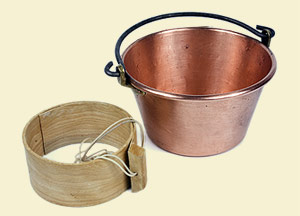
Many migrants brought favourite cooking tools to Australia, keeping familiar
food and culinary traditions alive in a new land. A well-used copper pan for
boiling milk...
more info »
more info »
Carmelo's wife Nina ran the shop and started introducing a few
delicatessen items. The liquor outlet and delicatessen expanded
hand-in-hand and became so successful that when Carmelo and
Nina's daughter Zina and son-in-law Illuminato (Nato) came to
live in Orange in about 1958, Zina started helping out in the shop.
Zina enjoyed immensely helping to run the shop.
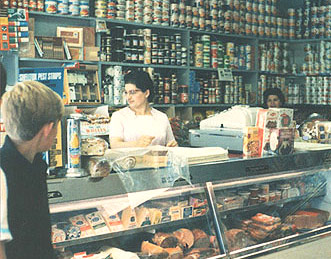

Zina D'Aquino with her mother Nina in their
Bathurst Road delicatessen, which was a great
favourite with migrants because it stocked the
food they liked. Photo courtesy Zina D'Aquino
We had 84 different varieties of cheese, and whatever
customers bought I'd give them a taste. There were different
types of salami and cooked meats. We introduced smoked
eel to Orange and were the first ones to get the truffles
and pickled walnuts. For a lot of the Dutch and German
people we had pickled herrings and Bismark herrings. I
dont know how many varieties of pasta we sold. We had
everything in drawers. Everything was weighed up in
front of you, nothing was pre-packed.


